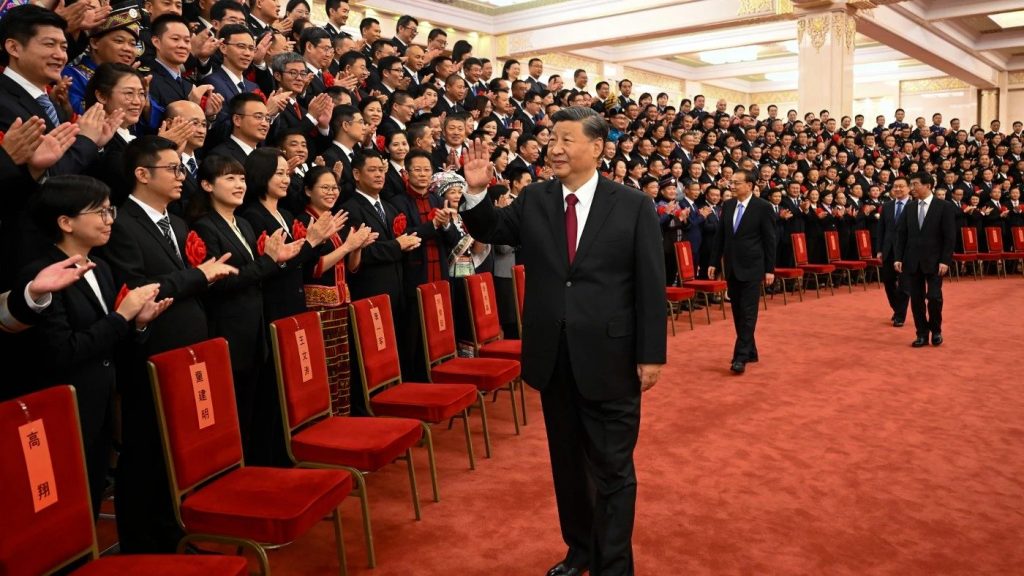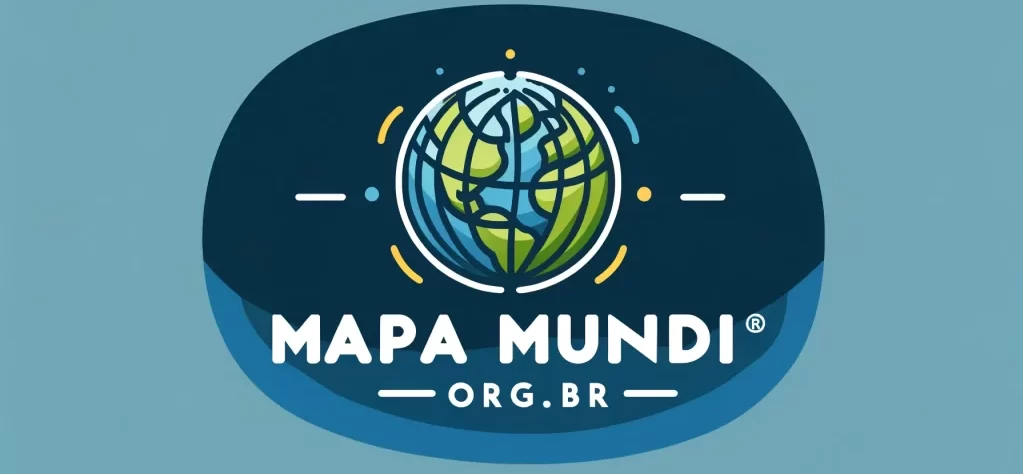
Started this past Sunday, 16 of October, the 20th National Congress of the Chinese Communist Party (PCC). It should outline China's general development goals by the year of 2035, according to a report previously sent to congressmen.
These objectives were defined in the “14th Five-Year Plan (2021-2025) for National Economic and Social Development and the Vision 2035 of the People's Republic of China", based on the proposals put forward by the Central Committee of the Chinese Communist Party, that aligned government strategies and priorities and guided market activities. According to this document, It is “a blueprint for China’s new journey towards a modern socialist country”., and a joint action plan for the Chinese people”. The five-year plans have traditionally formulated the country's development and reform strategy.
The document to be submitted for approval by congressmen outlines the main social goals, economic, and also the sectors considered key by the central government, translated into development guidelines and policies in the form of goals and objectives, both in quantitative and qualitative terms.
Among its main items, According to information from Xinhua, official government press, are included: 1) accelerate the pace of the economy and scientific and technological capacity building; 2) leverage GDP per capita to match that of mid-level developed countries; 3) place China among the most innovative countries in the areas of science and technology; 4) build a modernized economy that reaches a new level of development through industrialization, informatization, urbanization and modernization of the agricultural sector; 5) democratize the political system and governance capacity; 6) build a country based on law, governance and society; 7) become a leader in the fields of education, science and technology, culture, sports and health; significantly increase the “soft power” of the country; 9) guarantee a better standard of living for the population and raise the average “per capita” income to new levels for all social strata; 10) ensure equitable access to basic public services; 11) ensure modern standards of living for rural areas; 12) develop and ensure new ecological standards and reduce carbon emissions; e 13) strengthen national security and defense systems and modernize the armed forces.
Ufa!!!! Ambitious?… but in which scenario will these guidelines be formalized?
We know that China faces enormous challenges, such as the weakening of the pace of GDP expansion, a domestic real estate crisis and a troubled international scenario. at the end of september, for example, the World Bank revised the country's growth projections, estimated at 2,8% for this year, against 8,1%, in 2021. The collapse of the real estate sector, that the collapse of the second largest company in the Chinese real estate market, the developer Evergrande, revealed, and the continuous “lockdowns” to tame the covid do not seem to guarantee this optimistic impetus.
let's observe, So, the reverse of this medal.
Rapid economic growth has raised its per capita income, from one of the poorest countries in the world, in the middle of the last century, at upper-middle income level. When withdrawing almost 100 million people out of poverty, China has fulfilled the arduous mission of eradicating absolute misery, is today, by World Bank standards, accounts for more than 70% reducing the poverty of the world population. It is now the world's second largest economy and is approaching high-income country status.. From the opening process outlined and developed by Deng Xiaoping, at the end of the decade 70 last century, China has channeled a significant portion of its Gross Domestic Product to investments in infrastructure, like energy and transport, significantly higher than other developing countries. Investment in human capital has allowed it to better realize the potential of its huge population. For so much, the government, which has pursued prudent macroeconomic management, especially after the beginning of the years 1990, is determined to embrace market systems and open trade and investment regimes.
It is in this context that foreign trade currently accounts for a substantial portion of the economy.. In this course, China has had considerable experiences since the beginning of the 1990s. 1950. In 1954, one year after the end of the Korean War, the communist world represented 75% of your foreign exchanges. This situation has changed significantly since the beginning of Deng Xiaoping's economic reforms in the late 1990s. 1970, when the Special Economic Zones were created (SPAs) to integrate China into the international trading system. Today it is the largest exporting country on the planet and a center for the manufacture of medium and high technology products., benefiting from the competitive advantage of low cost (per hour…) of its abundant labor, what convinced industrial giants such as American Apple and Korean Samsung to set up factories in the country.
It is worth remembering that at the last congress, held in 2017, emphasis was placed on a series of reforms aimed at opening up state-controlled sectors, granting more rights to rural property, for example. By the way, the Council of State had already announced, in May 2015, a plan – “Made in China 2025” – aiming to update and consolidate the country's manufacturing industry, with the aim of transforming it into a global power in the coming decades, able to influence supply chains and drive innovation. was based, for so much, in the perception that the world is going through the fourth industrial revolution..The plan identified 10 key sectors – robotic; information Technology; aviation and aerospace equipment; high-tech marine equipment and ships; rail transport; new energies and energy-saving vehicles; power equipment; farm equipment; new materials; and biopharma and high-tech medical equipment – that will be a priority in government actions . This policy challenges the economic supremacy of this century's major international economies and corporations., according to analysts.
Not world context, the ambitious project of the “New Silk Road”, or “Belt and Road Initiative”, in English, strategy adopted by the government involving the development of Chinese infrastructure and investments in European countries, Asia and Africa, which was presented by the General Secretary of the Chinese Communist Party, Xi Jinping, in September and October 2013, during visits he made to Kazakhstan and Indonesia, signaled the ambition to realize the “China Dream”/”The China Dream”, term coined by a professor at the China Defense Academy, Liu Mingfu, according to which the main objective of the People's Republic is to become the leading economy on the planet, as Xi boasts in almost all of his speeches.
only that…
The challenges she faces are of similar proportions to her ambition. Among the main, we can list some particularly acute ones. Firstly, the gap created by the “one child per family” policy, initiative adopted by the government to prevent the population explosion that was foreshadowed in the 1990s. 1970. This policy ended in 2021, after being modified for two children, not before, however, of creating a generational vacuum that is already affecting the lives of the population and above all the economy, for the burdens that the generations that had no brothers will have to bear, in pension terms, for example, to face and provide for the livelihood of the older generations. A second is the swelling of urban areas resulting from the exodus of the rural population in search of opportunities and better jobs that industries and tertiary sectors provide in urban centers., where the permanent residency rate reached the home of 64,72%, in 2021. This rate will increase to 75-80% in 2035 ! Is easy (?) imagine what it means 1,4 billion individuals living in cities in terms of housing issues, transport, education, public health and pollution, for example. Another challenge ahead is the growing mismatch between social classes, that the affluence of the most enterprising individuals – or those associated with power – has been crystallizing. It would be difficult, nowadays, for a “root communist” to understand the statistical data that China has, today, the largest number of millionaires on the planet…Where would be the principles that fueled the struggle of Mao Zedong and his fellow communists of the “Great March”? Hence also the high rate of corruption that infests the Chinese CP, and whose eradication has become an obsession for Xi Jinping. E, Finally, how will she deal with the growing antagonism of neighboring countries fearful of her growing power?
However, the most acute question, the yearning for greater freedom, individual and collective, that the population's growing exposure to foreign media feeds despite censorship, and experiences abroad – the Chinese constitute the largest contingent of international tourists – could become the “Achilles heel” of the Communist Party of Xi Jinping and his comrades…
Great challenge. But I will deal with this in another post..
